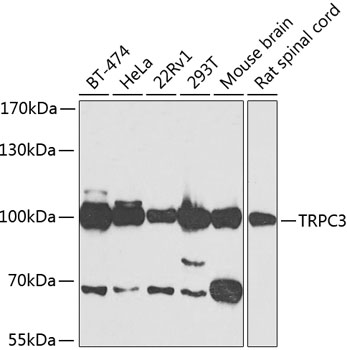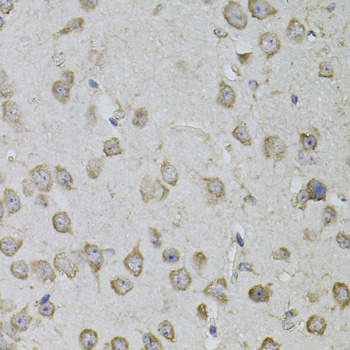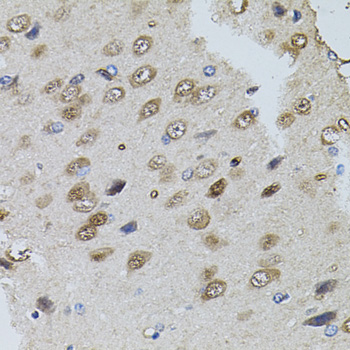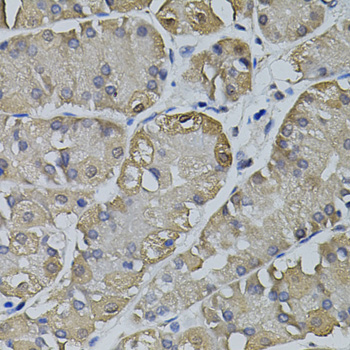-
Product Name
TRPC3 Polyclonal Antibody
- Documents
-
Description
Polyclonal antibody to TRPC3
-
Tested applications
WB, IHC
-
Species reactivity
Human, Mouse, Rat
-
Alternative names
TRPC3 antibody; SCA41 antibody; TRP3 antibody; short transient receptor potential channel 3 antibody
-
Isotype
Rabbit IgG
-
Preparation
Antigen: A synthetic peptide of human TRPC3
-
Clonality
Polyclonal
-
Formulation
PBS with 0.02% sodium azide, 50% glycerol, pH7.3.
-
Storage instructions
Store at -20℃. Avoid freeze / thaw cycles.
-
Applications
WB 1:500 - 1:2000
IHC 1:50 - 1:200 -
Validations

Western blot - TRPC3 Polyclonal Antibody
Western blot analysis of extracts of various cell lines, using TRPC3 antibody at 1:500 dilution.Secondary antibody: HRP Goat Anti-Rabbit IgG (H+L) at 1:10000 dilution.Lysates/proteins: 25ug per lane.Blocking buffer: 3% nonfat dry milk in TBST.Detection: ECL Basic Kit .Exposure time: 90s.

Immunohistochemistry - TRPC3 Polyclonal Antibody
Immunohistochemistry of paraffin-embedded mouse brain using TRPC3 antibody (40x lens).

Immunohistochemistry - TRPC3 Polyclonal Antibody
Immunohistochemistry of paraffin-embedded rat brain using TRPC3 antibody (40x lens).

Immunohistochemistry - TRPC3 Polyclonal Antibody
Immunohistochemistry of paraffin-embedded human stomach using TRPC3 antibody (40x lens).
-
Background
Thought to form a receptor-activated non-selective calcium permeant cation channel. Probably is operated by a phosphatidylinositol second messenger system activated by receptor tyrosine kinases or G-protein coupled receptors. Activated by diacylglycerol (DAG) in a membrane-delimited fashion, independently of protein kinase C, and by inositol 1,4,5-triphosphate receptors (ITPR) with bound IP3. May also be activated by internal calcium store depletion.
Related Products / Services
Please note: All products are "FOR RESEARCH USE ONLY AND ARE NOT INTENDED FOR DIAGNOSTIC OR THERAPEUTIC USE"
